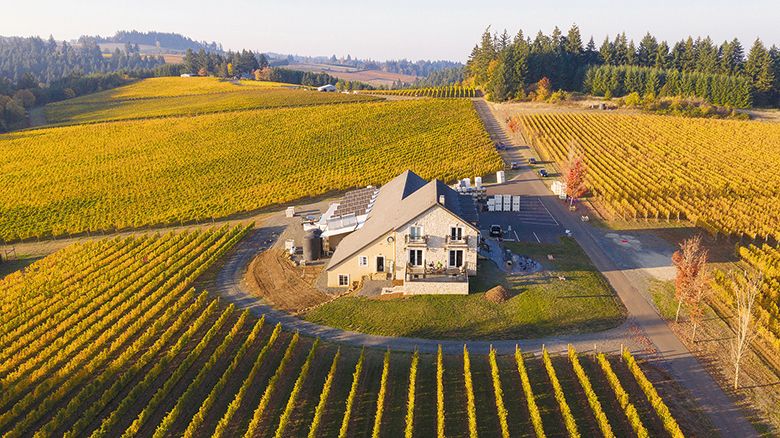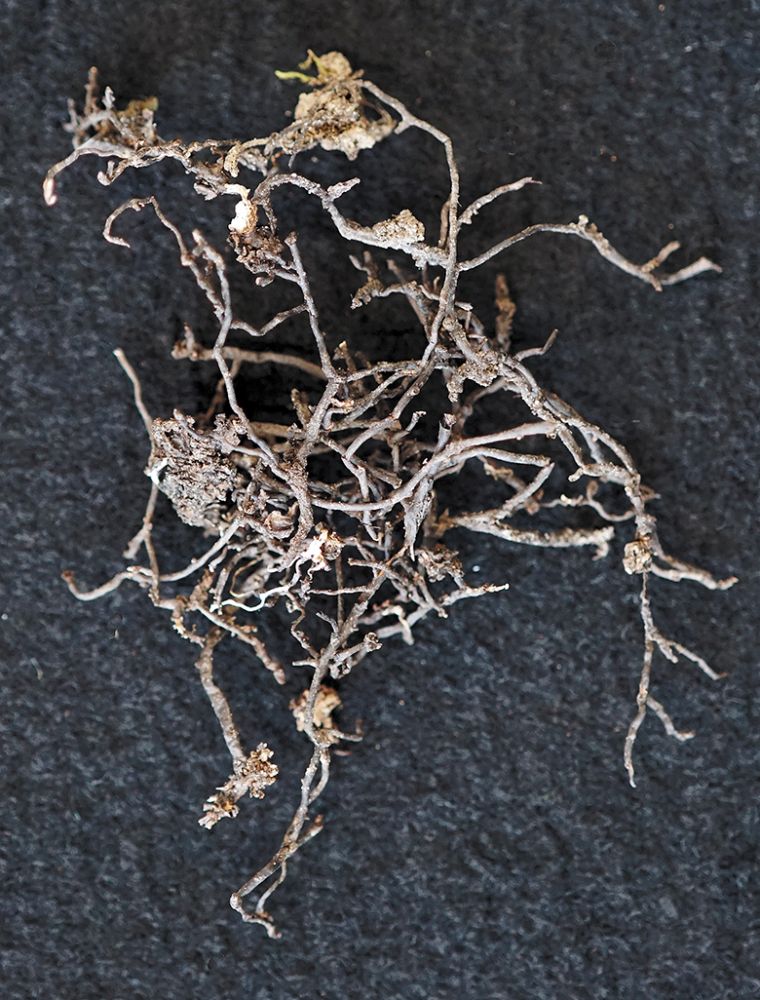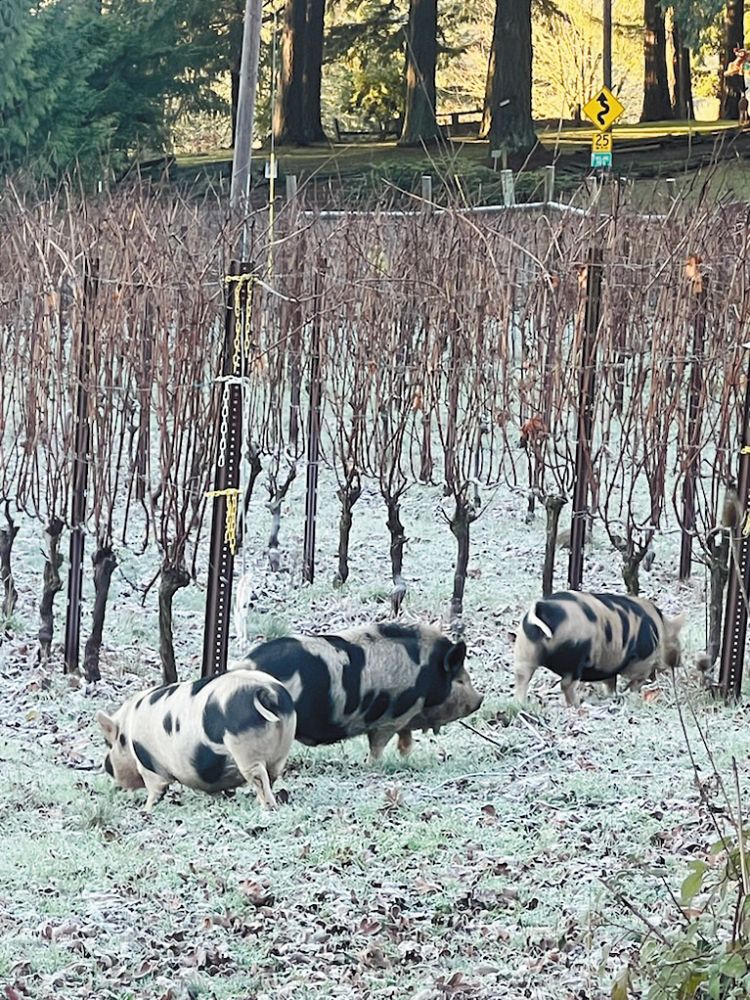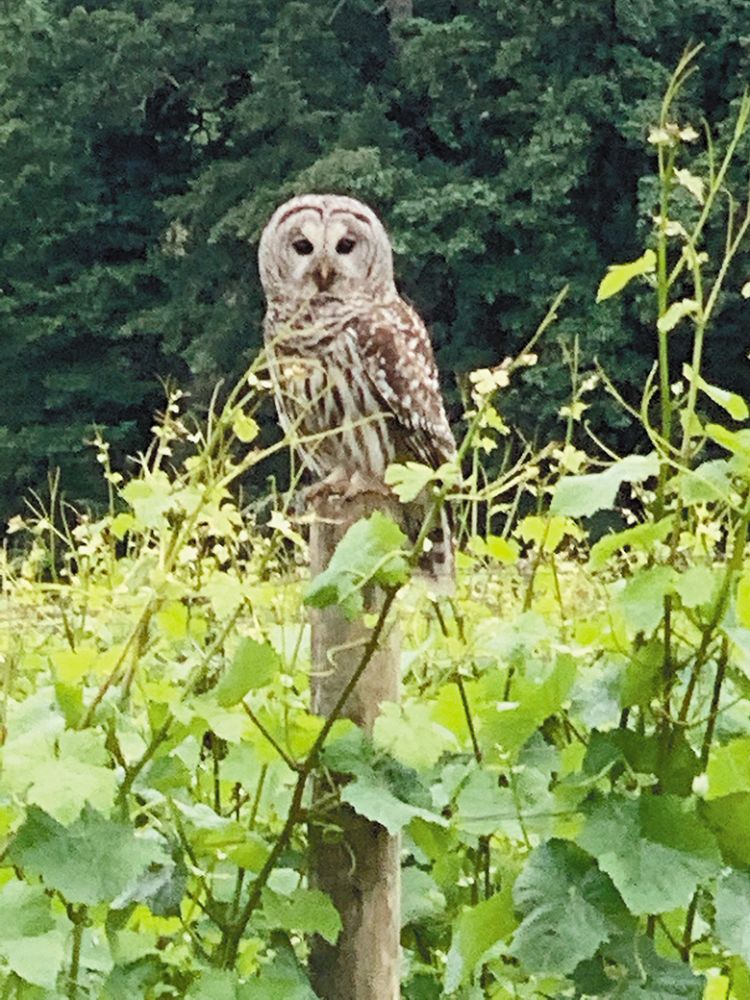Seeing the Forest for the Trees
Owners discuss how proximity to nearby forests affect their vineyards




By Jessica Zimmer
Oregon vineyards surrounded by forests enjoy definite advantages, including protection against spring frosts and damaging wind. Yet, when trees supply too much shade, vines struggle, and grapes fail to fully ripen.
In Willamette Valley’s Eola-Amity Hills American Viticultural Area, or AVA, Douglas fir trees predominate in natural forests. At Iterum Wines’ Salem vineyard, Orchard House, two-thirds of grapes established near old-growth maples and oaks, along with a mixed Douglas fir forest.
“We call the group of trees separating the Pinot Noir and Chardonnay grapes ‘The Grove.’ And the western edge of the vineyard, near the mixed forest, is partially sheltered from the winds blowing through the Van Duzer corridor. This creates a distinct microclimate,” says Joe Dobbes, co-founder of Iterum Wines.
Proximity to the forest can entail drawbacks. During the early morning and late afternoon, these Northwest natives shade some portions of the vineyard. “I have learned to take advantage of these areas, using the fruit in our Pinot Noir and Chardonnay sparkling wines. These grapes have naturally higher acids and lower pHs, allowing me to make both exceptional sparkling and still wines simultaneously,” observes Dobbes.
Large forests may also add humidity to the air. “This can induce rain to fall,” says Mark Björnson, co-founder of Björnson Vineyard. His Salem winery in the Eola-Amity Hills is surrounded on three sides by forest, the majority Douglas fir. “The proximity of the forest reduces temperature swings. In the spring, the vineyard is less prone to frost. On hot summer days, we are slightly cooler,” notes Björnson.
Cool air from the forests benefits specific grapes. “Auxerrois ripens very quickly. The morning shade from the forest slows the ripening process. Combined with a North slope, this supplies more complexity to a variety suited to an even cooler climate than the Willamette Valley,” according to Björnson.
Additionally, the cool air reduces the effect of heat spikes. “When it comes to Pinot Noir, grapes grown in a warm climate don’t have the same complexity as those grown in a cooler environment. Having a forest nearby brings the temperature down just a bit. One or two degrees can mean the difference between a really good Pinot Noir and a stellar one,” says Björnson.
Dobbes knows the importance of spending time in a vineyard making observations, such as noting the temperatures in non-shaded and shaded areas. “This information, plus an understanding of what wines you can make from the grapes, indicates how to best use grapes grown within a vineyard. The rosé of Pinot Noir, made from grapes grown in the partially shaded areas, has the aromas of red fruit– raspberry, cranberry and strawberry– as opposed to those of blue fruit like blueberry and Marionberry,” he adds.
The pros outweigh the cons
On a 37-acre property, near the top of a west-facing slope in the Eola-Amity Hills, sits the Bois Joli Vineyard. It supplies Brooks Wine and Silas Wines, both in Amity, with Riesling. Bois Joli sells Pinot Noir to Averæn Wines, based in Healdsburg, California, and Chardonnay to Authentique Wine Cellars, also in Amity.
The vineyard is surrounded by a mixed Douglas fir and oak forest. Shade from these trees doesn’t benefit the grapes; in fact, it makes them more vulnerable to powdery mildew and retards the ripening process. The tall trees also provide perches for songbirds who eat the ripe fruit.
Regardless, Barbara Bond and Rob Kistler, co-owners of Bois Joli, do not want to clear the nearby trees. The couple values the forest’s aesthetic beauty and wildlife habitat. Bond is also an expert; he’s professor emeritus of forest ecology at Oregon State University.
“The plants in the forest around our vineyard not only provide a home for beneficial insects that prey on harmful ones; raptors like owls and hawks live there too. They eat rodents that attack the roots and trunks of the vines and also deter songbirds from consuming the grapes. The forest canopy also shelters insectivorous birds like swallows. There are many tradeoffs,” explains Bond.
Bond adds how the forests act as corridors for wildlife to move across the landscape. This is less common in areas with “wall-to-wall” vineyards.
“Having forest as a separation also protects from sprays and pathogens in neighboring vineyards,” says Bond.
How fungi affect the relationship
Vineyards sited near forests are typically bare patches from which trees were cleared. The soil can be infected with fungal pathogens that once lived in the roots of the trees. One of the most harmful fungi is Armillaria, also known as the “oak root fungus” or “honey fungus.”
“This fungus sends out rhizomorphs, root-like threads that look like black shoe strings. When the rhizomorphs reach vine roots, they enter and take over the vascular cambium, the main growth tissue in the stems and roots. The fungus then utilizes the grape’s outer and inner core to usurp the vine’s nutrients. As a result, the top part of the vine usually dies,” says Dr. Jay Pscheidt, professor of botany and plant pathology at Oregon State University.
“Another concern of having a vineyard too close to a forest: the grapes are more attractive to deer. They’ll eat the fruit and plants,” explains Pscheidt.
However, there is an advantage for vines at the end of a row, in the green space between the vineyard and forest. Pscheidt says, “These plants usually have more room to grow, so they get larger. The grapes they grow can contain more nutrients.”
Another drawback? Birds and animals can “assist” with the dispersal of seeds, leading to “volunteer” grapevines growing in the forest. “These seedlings are usually crosses between plants, and, because they sometimes harbor grape fungal pathogens, can become a threat to the vineyard. We’re seeing more of this in riparian areas close to rivers,” observes Pscheidt.
Fortunately, fungal infections confined to conifer-specific parts of a plant, like the needles of a Douglas fir, are not likely to spread to a vineyard. “Many foliar (leaf) fungi are very specific to the plant hosts they infect,” says Dr. Kyle Gervers. He recently earned a Ph.D. in botany and plant pathology from Oregon State University.
Wine enthusiasts and growers should not overestimate the beneficial effects of forest fungi.
Gervers explains, “There’s this perception of the forest as a magical place containing fungi that exist to benefit all plants. Some common species of fungi are found in both environments, but generally, each ecosystem enriches for a small, unique set of dominant fungi.”
How oaks change the picture
Oregon white oaks are often found near vineyards, in groves or as single trees. A single mature oak simulates a miniature forest, creating its own environment with deep, extensive roots. Dropping hundreds of acorns each year, its canopy and understory are home to numerous species of insects, birds and small mammals.
A mature Oregon white oak typically grows between 70 and 100 feet high and can spread up to 60 feet wide. In contrast, a mature Douglas fir can grow up to 80 feet high and spread 20 feet wide.
Jessica Cortell, owner of Vitis Terra Vineyard Services and founder of the Cortell Collection in Amity, mentions a single large Oregon white oak “with a wagon wheel early settlers stuck in its trunk” is at the center of a block of Chardonnay on her Newberg property. “I think the oak helps improve the soil. It’s not the best spot, but the vines near it are doing well. The temperature always tends to be a bit cooler around the tree, due to the shade,” says Cortell.
Ensuring the vineyard remains in good health means maintaining the oak as well. This involves removing damaged limbs in danger of falling on the vines below and destroying ivy attracted to the tree. The ivy is dangerous because it could choke the tree, eventually killing it. Cortell also checks on the oak after powerful rains to ensure the tree doesn’t become uprooted and fall on the vines.
“That happened with another one of my Oregon white oaks recently. The ecosystem dynamic was so changed its now prone to invasion by European blackberries,” says Cortell.
Oak trees can also attract unwanted guests– feral swine. The pigs will trample fences, vines and trunks in their quest for acorns. Cortell prevents this with her team of Kunekune grazing pigs, a New Zealand breed with short legs. Cortell explains, “For the last decade, my pigs have grazed in the vineyard and eaten fallen acorns near the oak tree after harvest. Soon, I will introduce my pigs to a second vineyard. I plan to collect soil samples and compare the two vineyards so I can see how the soil quality evolves.”
Jessica Zimmer is a news reporter, attorney, and educator based in northern California. She has worked in journalism for over 20 years. She covers a wide variety of industries, including alcoholic beverage production, transportation, law and the arts.












